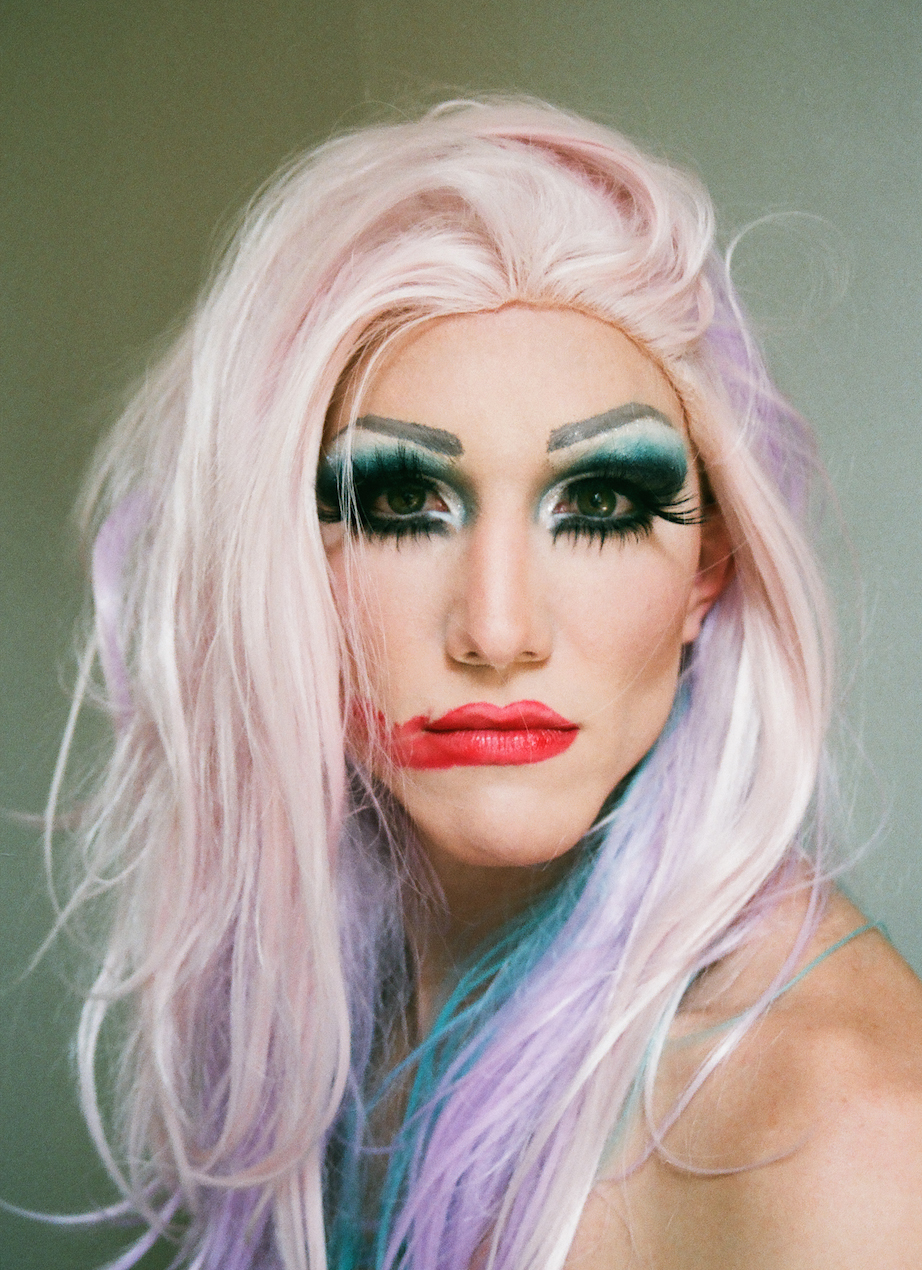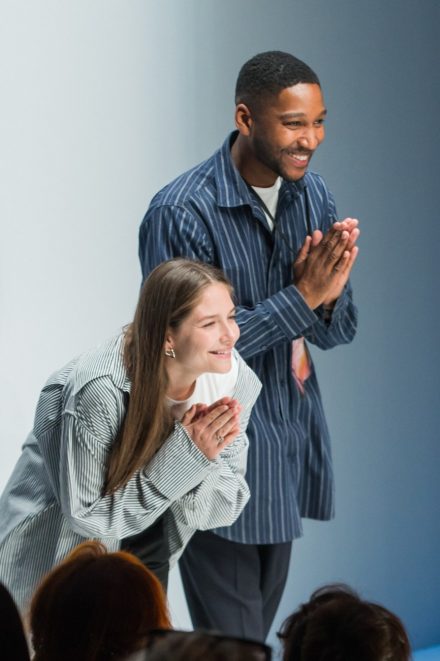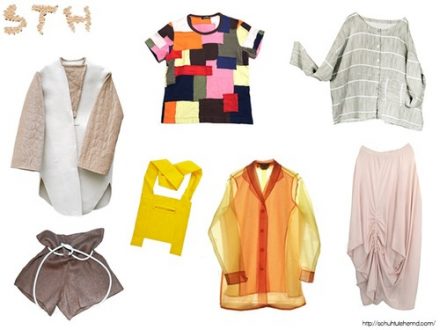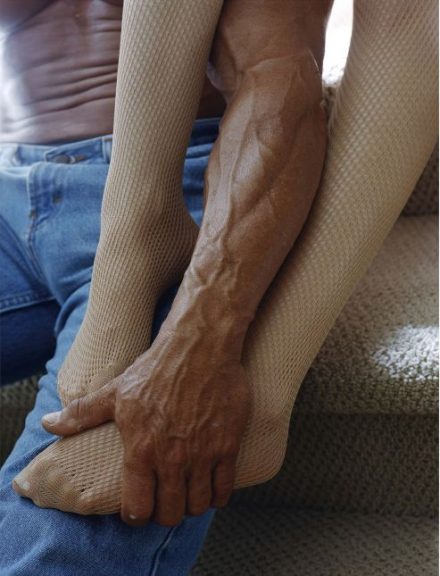Berlin based photographer Joseph Wolfgang Ohlert is gifted with a sixth sense, an attuned eye for the aesthetic quality of raw emotion.
He recognises that art is pervasive, that people are art, that taking pictures of an individual is far more than simply posing before a camera. His photographs are honest, emotive and coloured by a distinct humour, arousing fascination and intrigue for the personalities he captures. All of this is down to the fact that in front of his lens, people reveal their innermost selves, completely unaware of their doing so. His last book, Gender as a Spectrum, hosts a series of portraits, each a depiction of an individual totally at one with themselves, no matter their sexuality or gender.
Πhad the chance to chat with Joseph in his new gallery in Prenzlauer Berg to discuss his book, the art of taking the perfect photograph and the true beauty of Berlin.




You have four Instagram accounts, which seem to keep you busy. Judging by @photobook_lover, you also appear to have quite the photo book collection! Do you remember when you bought your first one?
Funny that you mention it, because that’s kind of my secret account, a thing on the side, I don’t post on it very much, but I do like it. And yes actually, I was twelve years old and visiting Edinburgh when I found this super old bookstore with a photography section. The very first book I bought was by Jeanloup Sieff, a fashion photographer from Paris. I really loved the pictures, but I guess I just chose it because it was both the biggest and cheapest (laughs). Though the funny thing is that we were on the road with our backpacks, so I had to carry the book the whole day! That was the first, the first of many.
Was that the starting point of your interest in photography?
It may have been, it was the first time that I went out of my way to learn something about photography at least. But it was only until after I’d finished school and moved to Berlin that I really developed an interest. It was a weird time, I was 19 and had no idea what to do. I’d put on a few photography exhibitions and was just taking pictures, as I hadn’t been accepted to art school. Then one day, my mother sent me a link to the Ostkreuz Photography School; I had nothing to lose so I just checked it out. They accepted me right away and that was that! But, all the same, I consider myself more of a curator: I’ve never had the patience to weigh myself down with learning techniques, I’ve always preferred just taking pictures. I’m aware of the result I’m looking for, and I’m conscious of what I need in the shot to pull it off, so I just do it!
When did you take your first photo?
In school; we had to construct our own cameras and take pictures with them. My first photo with this camera was actually a self-portrait. So that was kind of my first shot. I mean when you’re a child, there is always a camera around and you take a few snaps, or your parents show you how, but yes, I guess my real first photo was that self-portrait at school.





Since we’re on the topic of photo books, you launched your book, Gender as a Spectrum, a year ago. What was its guiding principle?
As a child, I wanted to be a girl in some respects: I would wear earrings and play with Barbie dolls, run around in princess dresses, which I guess is a bit of gay cliché, whatever that means. Later on, I found myself fully comfortable as a man, I was happy with the body into which I was born. I tried to seek out the differences between men and women, boys and men, gay men and straight men, trying to figure out where I fitted among all these labels. When I came to Berlin, I met so many people, including drag queens and Kaey, a trans woman. She asked me if I’d be interested in working with her, and we later went on to collaborate on this book. She liked my photographic style and she wanted to work on something that really gave people a voice. At the time, I was still trying to figure out what I wanted to do for my graduation project and it was a topic that I was interested in, so that’s more or less when we decided to collaborate.
The book consists of different portraits, each accompanied by an interview. I assume that you took the photos, while Kaey did the interviews?
Yes, she carried out the interviews, but we thought about the questions together. We just wanted to create a frame within which people had as much space as possible. We wanted it to be entirely personal.
What do you want to convey with your photographs?
I want it natural, not insincere. I want neutral perception, perhaps with a hint of sexiness, but it’s not my aim, I don’t want people to strike sexy poses. I just want a nice angle, with complementing colors, background and lighting. I try to take a natural picture, with as little of myself as possible invested in it. The only trace of me is my Joseph Wolfgang Ohlert filter (laughs).
So you focus on portraiture?
Yes, absolutely. At school, we always had to take landscape photographs, I guess I must have been quite good it, but it didn’t really grab my attention; anyone could do it. I need to be able to foster a direct link with another person, this relationship is fundamental to me. I would say that every time I take a photo, I am somehow searching for myself. This self-questioning is a recurrent motif, in my work as well as in my life – it’s when you’re with others that you come to a clearer realization of who you really are.
In order to get the best photos, is it important to have a special bond with the subject?
No, not really. I can take great pictures of people that I’ve just met and will probably never see again; I can create a bond with people in seconds. Time is so relative when the connection is there!
What can you tell from a person’s character by photographing them?
You always get to know someone when you photograph them: photography is an intimate act. You see the different ways in which a person presents themselves before the camera; they turn around, make their poses and so on and I’ll just stand there, not taking pictures, but just looking at them, waiting for them to calm down. I don’t want them to jump around and give me a sort of studio model performance. The first pictures are always the ‘pressure pictures’, and I can usually throw the first half of the film away. I then simply tell people to close their eyes and relax, it all comes down to communication.



What excites you about photographing drag queens?
I think it comes back to self-questioning. I like people who are interested in more, people who dedicate time to deep self-engagement. Most members of marginal groups have to do so, on account of not being welcomed into “the norm”. As such, any drag performer must have really reflected upon identity before being comfortable enough to do what they do. It’s the authenticity of their stylised performance that makes them so attractive in my eyes. Though what’s funny is that all those high-society wannabes and fashion bloggers, desperately trying to make their fake live appear real, are in fact less genuine than the drag queens on stages in “fucked up” bars around Kreuzberg!
Where do you find the people for your photo shoots? You’re quite familiar with Berlin’s LGBTQ scene: is this where you meet your models?
Here and there really: it’s impossible to avoid the LGBTQ scene in Berlin, it’s where the best parties are. But I think I actually find most of them on Instagram, in people’s tagged lists, or through agencies as well. I actually prefer searching for people on social media rather than on the street: people might attract you with their general look, or simply by the way they walk, leading you on in a way, but, sometimes, when you take pictures of them, you can’t help but feel a certain disappointment, as what initially drew you to them doesn’t necessarily translate. Sometimes, using Instagram makes things easier, you get an idea of how the subject comes across in pictures, as well as of how they work with the camera.
But isn’t that the opposite to you want to achieve with your photos? Espiecially since so many Instagram pictures are altered or photoshopped, offering little of the naturalness and authenticity you look for…
I think I can filter that out quite easily. I can see how they present themselves, how they look into the camera and the kind of pictures they upload. From that alone, I think I glean a pretty good sense of how the person will come across on film. I often go to the tagged list of their Instagram account to see how other people portray them; that’s were you can see the real person behind the Instagram! (laughs)
Watch out for your tagged list! What is it about a person that makes you want to photograph them?
I have so many friends in Berlin who ask me why I don’t want to take pictures of them, and I actually hate it when I’m asked that. If it happens, it happens. If I want to take pictures of someone, I’ll tell them immediately. When I go to the lake with my friends and I have my camera with me, I might feel a sudden welling of creativity and I love photographing them then. But taking pictures of someone is a matter of creating a bond. It’s only really in photographing them that I actually really meet the person.


It would seem that the trend of today is a return to analogue photography, the revival of Polaroid and disposable cameras being cases in point. All your pictures are taken with an analogue camera. What’s wrong with digital?
There is nothing wrong with digital. Many friends work with digital cameras and they produce awesome work. I think it simple comes down to some people starting out with digital, others with analogue, and each sticking to what they’re most familiar with. I am still trying to figure out what draws me to analogue over digital. But ultimately, I think that everyone has a soft spot for the softness of analogue images; even Instagram has an analogue filter! For me, it feels a little more authentic and I also like the procedure. You don’t simply release the shutter and be done with it; analogue photography takes time and it’s one of the things I love about it.
What is the editing process like?
I take the film to the store; they develop it and scan the pictures, which I then upload to my computer to make an initial selection of the best ones. I then edit them in Photoshop, just to lower the red tinge, increase the contrast or slightly adjust the angles. So I do some digital editing, but hardly very much. It’s not something I feel bad about it, as all of these adjustments could be made in the darkroom. It just takes much more time, and I just don’t have the patience for that (laughs).
For those that might never have seen your work before, what exactly is the Joseph Wolfgang Ohlert filter?
Centered and harmonious; I like an unpretentious look, not too much attitude. When people ask me what kind of photography I do, I always answer: Portraits. Some fashion as well, but portraits are my main focus! (laughs)
You once said in an interview that you have to give Berlin something or Berlin won’t give you something back. When did you come to this realisation?
I think it’s something that you continually realize. When people come to Berlin and don’t like it, it’s more often than not because they expected too much in the first place. Given that everyone raves about how amazing Berlin is, how you must visit, people expect to turn up and receive all that they’ve heard of on a plate. At the end of the day, Berlin has nothing to offer: it’s far from being a beautiful city, but its beauty dwells in its residents.
And is fashion important to you?
Yes! I love fashion! I love being surrounded by people who really do fashion, who really dress up. I sometimes wish that I were more like that, but I prefer lurk in the background, jumping into the crowd as and when I please, but always with the possibility of retreat.
Do you work with stylists?
I’ve worked with stylists before, but have had a hard time… I would love to have a long-standing collaborator, but have yet to find someone. Not being a fully-fledged fashion photographer only makes things more difficult. I sometimes ask people to bring different clothes with them, just so that we can try different looks, but I can’t really tell what I don’t like to photograph when it comes to fashion: sometimes it works and sometimes it doesn’t.

Since we’re currently sitting in your own gallery, what can we expect for the future?
‘Gender as a Spectrum’ was my first book and I want to produce more! At the moment, I’m working on my second book – it’s actually nearing completion, but not published yet. But that’s the path I’d like to take, publishing books and magazines; the focus wouldn’t be on my work, but rather on that of other artists. I want to blend styles and create something new, and that’s what the gallery is all about, serving as a working space for everyone.
So it’s not just a space to exhibit your own work?
No,no, it’s not just for my photos. Having a gallery solely for the purposes of presenting your own work feels almost incestuous to me! (laughs). I want it to serve as collaborative forum, not only for photography, but also for art, music and performance.
Sounds like a great idea! We’re excited to see what comes next!
Photography via Joseph Wolfgang Ohlert




